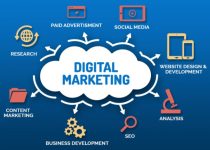What are the benefits of web design?
What are the benefits of web design?
Web design plays a crucial role in the online presence and success of businesses and individuals. Here are some key benefits of effective web design:
First Impressions Matter
A well-designed website creates a positive first impression. It is often the first interaction a visitor has with a business or individual, and a visually appealing and user-friendly design can leave a lasting positive impression.
Enhanced User Experience (UX)
Good web design focuses on providing a positive user experience. A well-organized and intuitive layout, easy navigation, and quick loading times contribute to a user-friendly experience, keeping visitors engaged and satisfied.
Brand Identity and Consistency
Web design is instrumental in building and maintaining a consistent brand identity. The use of consistent colors, fonts, and imagery across the website reinforces brand recognition and establishes a professional image.
Mobile Responsiveness:
With the increasing use of mobile devices, a responsive web design ensures that the website functions and looks good on various screen sizes. This is not only user-friendly but also positively impacts search engine rankings.
Effective Content Presentation
A well-designed website presents content in a structured and visually appealing manner. This helps visitors quickly find the information they are looking for, leading to a more engaging and informative experience.
Increased Conversion Rates:
A website designed with a focus on user experience and clear calls-to-action is more likely to convert visitors into customers. Streamlined navigation and compelling design elements contribute to higher conversion rates.
Competitive Advantage
In a competitive online landscape, a visually appealing and well-designed website can set a business apart from competitors. It instills trust in visitors and positions the brand as professional and reliable.
Adaptability to Trends
Web design allows for the integration of current design trends and technologies. Staying updated with design trends ensures that the website remains visually appealing and relevant to contemporary audiences.
Social Media Integration:
Web design facilitates seamless integration with social media platforms. This is essential for businesses looking to expand their online presence and connect with their audience through various channels.
Analytics and Tracking
Effective web design includes the integration of analytics tools that provide valuable insights into user behavior. Analyzing data helps in making informed decisions for further optimization and improvement.
Scalability and Flexibility
A well-designed website is scalable and adaptable to future changes and growth. It allows for the addition of new features, content, or functionalities without compromising the overall design and user experience.
Cost-Effectiveness
Investing in good web design from the outset can be cost-effective in the long run. A well-designed website requires fewer updates and fixes, reducing maintenance costs over time.
Accessibility Compliance:
Web design that considers accessibility standards ensures that the website is usable by individuals with disabilities. This inclusivity not only expands the audience but also demonstrates a commitment to social responsibility.
In summary, Web designing course in Chandigarh It goes beyond aesthetics; it encompasses functionality, user experience, and business goals. A strategically designed website is a powerful tool for building a strong online presence, engaging visitors, and achieving business objectives.
How to learn basics of web designing?
Learning the basics of web designing involves understanding key concepts and acquiring fundamental skills in areas such as HTML, CSS, and basic design principles. Here’s a step-by-step guide on how to get started:
Understand the Basic
Familiarize yourself with fundamental concepts like what a website is, how it works, and the role of browsers. Understand terms like HTML, CSS, and JavaScript.
HTML (Hypertext Markup Language)
Learn HTML, the standard markup language for creating web pages. Understand the structure of HTML documents, including elements, tags, and attributes.
Resources:
W3Schools HTML Tutorial: HTML Tutorial
Mozilla Developer Network (MDN): HTML Basics
CSS (Cascading Style Sheets)
Learn CSS to style and format HTML elements. Understand how to use styles, selectors, and properties to control the appearance of web pages.
Resources
W3Schools CSS Tutorial: CSS Ttorial
MDN: CSS Basics
Responsive Web Design
Learn about responsive web design to create websites that adapt to different screen sizes. Understand media queries and flexible layouts.
Resources:
W3Schools Responsive Web Design Tutorial: Responsive Web Design
MDN: Responsive design basics
Basic JavaScript
Start learning JavaScript to add interactivity to your websites. Focus on basic concepts like variables, functions, and event handling.
Resources:
W3Schools JavaScript Tutorial: JavaScript Tutorial
MDN: JavaScript Basics
Version Control
Familiarize yourself with version control systems like Git. This is not strictly related to web design but is valuable for collaboration and code management.
Resources:
Atlassian Git Tutorial: Git Tutorial
Basic Design Principles
Understand basic design principles such as color theory, typography, and layout. These principles will help you create visually appealing websites.
Resources:
Canva Design School: Design Basics
Practice, Practice, Practice
Apply what you learn by working on small projects. Create a simple personal website or replicate existing websites to practice your skills.
Online Courses and Platforms
Enroll in online courses on platforms like Udemy, Coursera, or Skillshare. Many courses cover web design fundamentals and advanced topics.
Join Communities
Join web design communities, forums, or social media groups. Engage with experienced designers, ask questions, and seek feedback on your work.
Build a Portfolio
As you gain skills, start building a portfolio to showcase your work. Include personal projects and any freelance work you undertake.
Remember that Best Web designing course in Chandigarh sector 34 It is both a technical and creative field, so practice and creativity are key. Be patient with yourself, and gradually you’ll become proficient in web design.
Read more article:- Intech-bb.


